Input interpretation

D-xylonic gamma-lactone
Chemical names and formulas
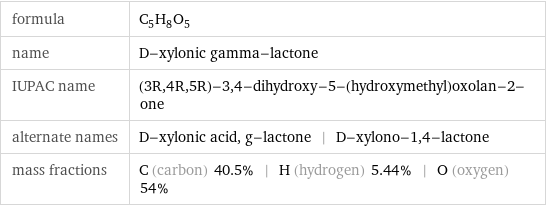
formula | C_5H_8O_5 name | D-xylonic gamma-lactone IUPAC name | (3R, 4R, 5R)-3, 4-dihydroxy-5-(hydroxymethyl)oxolan-2-one alternate names | D-xylonic acid, g-lactone | D-xylono-1, 4-lactone mass fractions | C (carbon) 40.5% | H (hydrogen) 5.44% | O (oxygen) 54%
Lewis structure
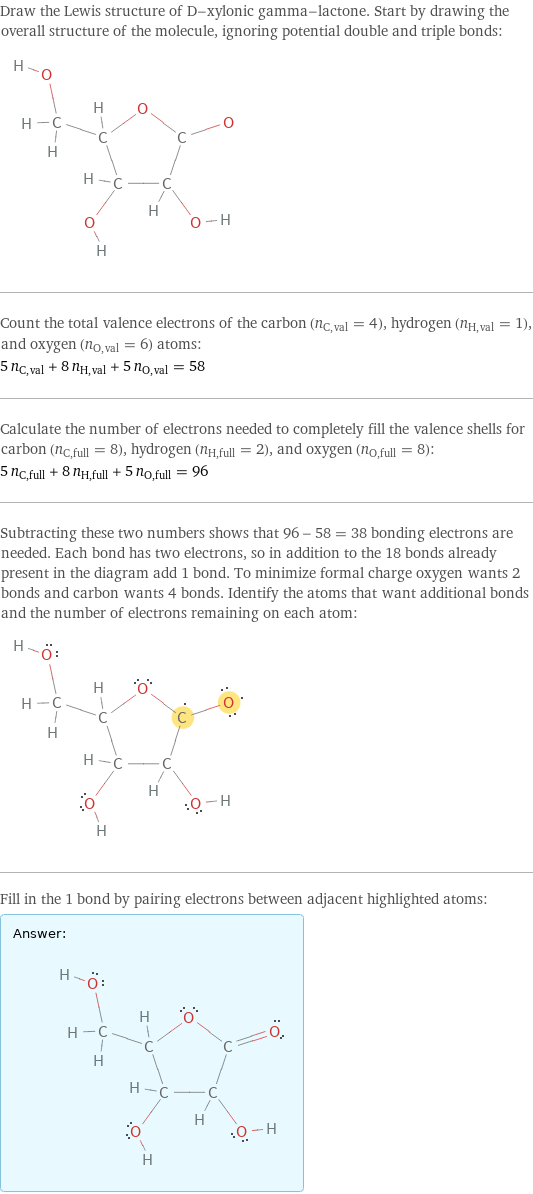
Draw the Lewis structure of D-xylonic gamma-lactone. Start by drawing the overall structure of the molecule, ignoring potential double and triple bonds: Count the total valence electrons of the carbon (n_C, val = 4), hydrogen (n_H, val = 1), and oxygen (n_O, val = 6) atoms: 5 n_C, val + 8 n_H, val + 5 n_O, val = 58 Calculate the number of electrons needed to completely fill the valence shells for carbon (n_C, full = 8), hydrogen (n_H, full = 2), and oxygen (n_O, full = 8): 5 n_C, full + 8 n_H, full + 5 n_O, full = 96 Subtracting these two numbers shows that 96 - 58 = 38 bonding electrons are needed. Each bond has two electrons, so in addition to the 18 bonds already present in the diagram add 1 bond. To minimize formal charge oxygen wants 2 bonds and carbon wants 4 bonds. Identify the atoms that want additional bonds and the number of electrons remaining on each atom: Fill in the 1 bond by pairing electrons between adjacent highlighted atoms: Answer: | |
3D structure
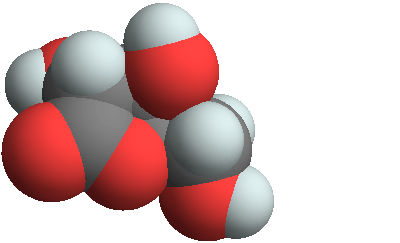
3D structure
Basic properties
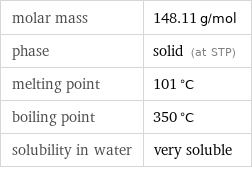
molar mass | 148.11 g/mol phase | solid (at STP) melting point | 101 °C boiling point | 350 °C solubility in water | very soluble
Units

Chemical identifiers
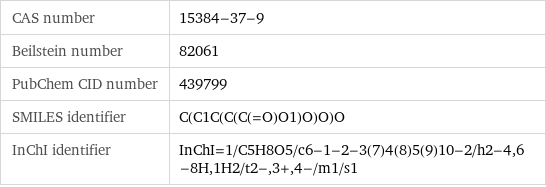
CAS number | 15384-37-9 Beilstein number | 82061 PubChem CID number | 439799 SMILES identifier | C(C1C(C(C(=O)O1)O)O)O InChI identifier | InChI=1/C5H8O5/c6-1-2-3(7)4(8)5(9)10-2/h2-4, 6-8H, 1H2/t2-, 3+, 4-/m1/s1